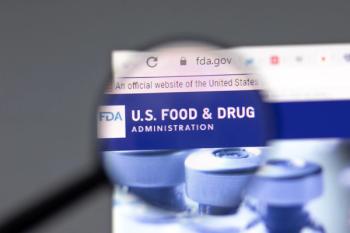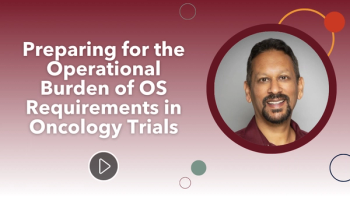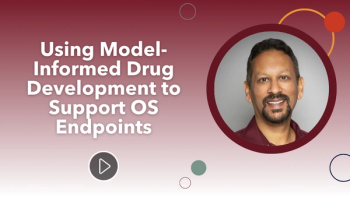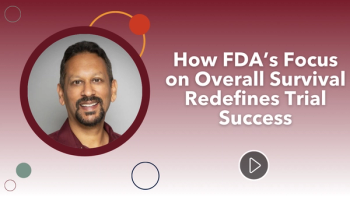
Redefining the Sciences of Drug Safety
Innovative surveillance tools and technologies have transformed the field of drug safety into a more proactive, dynamic analytical process. As the field continues to grow, drug safety leaders, regulatory authorities and healthcare providers rely on active surveillance systems to expand knowledge of the medical products we use and regulate. For example, the FDA has mandatory surveillance systems (AERs, VAERs, MAUDE and MedWatch) dedicated to furthering the science of medical product safety. Recently, new pilot programs, such as the FDA Sentinel Project, use federally-held data sources to monitor public health and safety of medicines. Today, pharmacovigilance activities are also being employed much earlier by industry with risk/benefit analysis occuring throughout a product’s development. Safety research professionals have increasing expertise in drug safety compared to 20 years ago. This may be due to the growth of sub-specialties of surveillance and risk evaluation of medicines including:
- Pharmacovigilance (PVG): the pharmacological science relating to the collection, detection, assessment, monitoring, and prevention of adverse effects with pharmaceutical products.
- Risk Management (RM): the systematic application of quality management policies, procedures, and practices to the tasks of assessing, controlling, communicating, and reviewing risk.
- Risk Evaluation and Mitigation Strategies (REMS): a strategy used to manage a known or potential serious risk associated with a drug or biological product.
- Signal detection or safety signal (SD): the information that arises from one or multiple sources (including observations or experiments), which suggests a new, potentially causal association, or a new aspect of a known association between an intervention (e.g., administration of a medicine) and an event or set of related events, either adverse or beneficial, that is judged to be of sufficient likelihood to justify verification [Council for International Organizations of Medical Sciences (CIOMS)].
These specialty areas have grown into a global industry with new and innovative systems and technologies to enhance the safety of medicines around the world. On July 9, 2012, The Food and Drug Administration Safety and Innovation Act (FDASIA) was signed into law, which expanded the FDA’s authority and ability to safeguard and advance public health in four key ways:
Today, opportunities extend beyond basic pharmacovigilance operation activities such as case processing and medical coding. Since earlier safety planning has become best practice and is more proactive, company discussions often include development of required pharmacovigilance and risk management plans, innovative safety systems activities in data migration and data mining (i.e. database express set-up and recoding) and a growing interest in better understanding signal detection strategies. Increased safety measures have been taken by regulators and industry researchers to ensure that the benefits outweigh the risks in marketed products, which in turn has lead to the development of new areas associated with the REM-related risk management activities, including the development of regulated medical communications and health literacy of consumer products (i.e., Medication Guides, Package Inserts), qualitative and quantitative analysis and knowledge attitude and behavior surveys for healthcare providers and patients. Globally, monitoring of safety, particularly in low-cost markets and developing countries, has also emerged as an important issue due to pharma expansion in these regions after the financial crisis. Many pharmaceutical companies have moved their operations to these low-cost regions to minimize costly R&D and manufacturing expenses, making global safety even more of a priority due to the increasing use of medicines and growth of clinical trials overseas.
As trends in outsourcing continue to rise, many companies, particularly smaller companies, will demonstrate a growing need to partner with CROs that are seasoned and can provide broad areas of safety support. To meet these needs, CROs will have to build capacities to ensure that they have a robust safety team of qualified safety experts and personnel. Key characteristics of a strong safety team include:
- In-house Expertise. Internal pharmacovigilance teams must be equipped with tools and skill sets to do proper analysis of adverse events including complex quantitative assessments of risk prior to being presented to health authorities. The ability to perform case processing is just the beginning. Support is equally needed in areas like: post-marketing commitments, medical writing, and signaling detection.
- Staff Retention. Reduces interruptions in client projects.
- SOPs and Processes. Established internal standards of quality assurance.
- Systems & Technology. CROs should be prepared to compete by investing in their own world-class safety database to service the needs of their clients. World-class safety databases reduce costs of data migration. Another advantage is it allows multiple uses for all clients. Companies are seeking to consolidate their safety data so the use of a single safety database rather than multiple databases at different CROs. Exposure to a various clinical and safety systems (ARISg, Argus, Medidata, etc) is also important.
- Continuing Education & Training. Companies should develop staff training plans using existing expertise, professional development programs, certifications, and lunch and learns. A staffing plan should also include recruitment of skilled and new safety professionals to build internal capacity in pharmacovigilance expertise.
In conclusion, the days of simply gathering safety data are no longer due to risk analysis regulations and more stringent requirements in protecting human subject research. Today, it’s more critical to establish a risk/benefit profile, making PVG and risk management plans mandatory for the identification of signals and other safety concerns. Health authorities require more robust safety data analysis, particularly when reviewing case information, PVG plans, and aggregate report submissions. This growing focus on product safety forces industry leaders in CROs and pharma companies to better understand when and how early to perform proper analysis of adverse events. As new opportunities arise across different sectors of the market, pharma is looking to the CRO industry to fill the gaps.
Dr. Magalie Emile-Backer is a Drug Safety and Pharmacovigilance Specialist at Technical Resources International, Inc. (tech-res.com).
REFERENCES
1. Risk Evaluation and Mitigation Strategies: Modifications and Revisions Guidance for Industry April 2015
2. Jim Zhang, Ph.D. (2014), Global Drug Discovery Outsourcing Market Gaining Momentum: Global Sourcing Council
3. Council for International Organizations of Medical Sciences (CIOMS)
4. Q9 Quality Risk Management ICH Guidance 2006
5. FDA.gov
6. Hemavli Bali (2013), CROs (Contract Research Organizations) and other outsourced pharmaceutical support services M&A drivers and trends: Results Healthcare
Newsletter
Stay current in clinical research with Applied Clinical Trials, providing expert insights, regulatory updates, and practical strategies for successful clinical trial design and execution.






.png)



.png)



.png)
.png)
